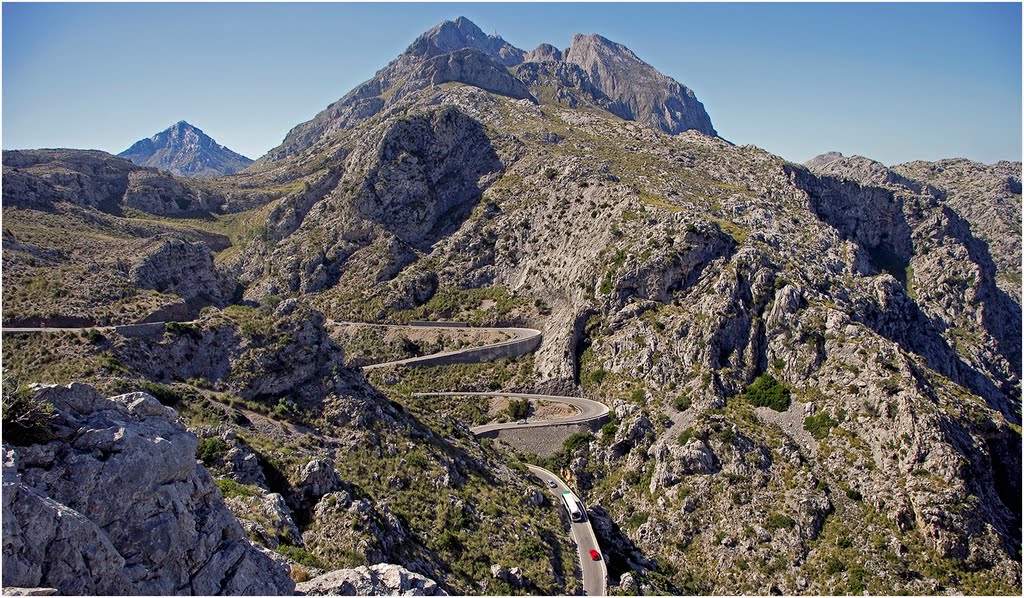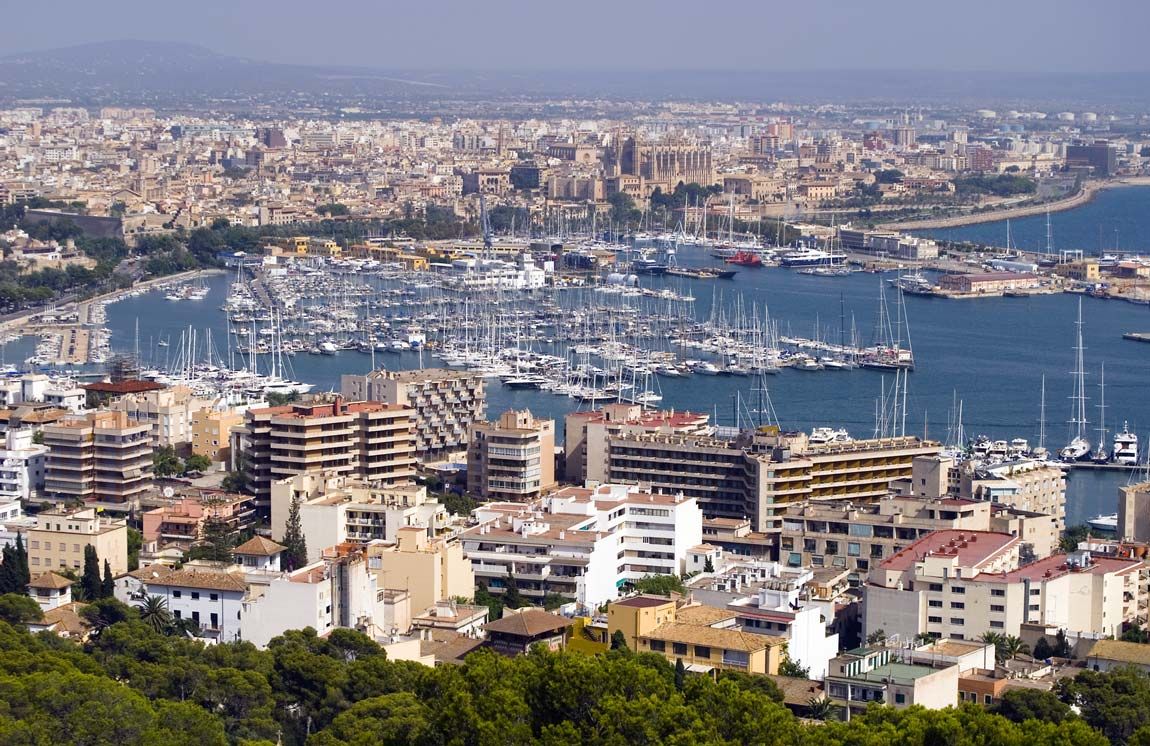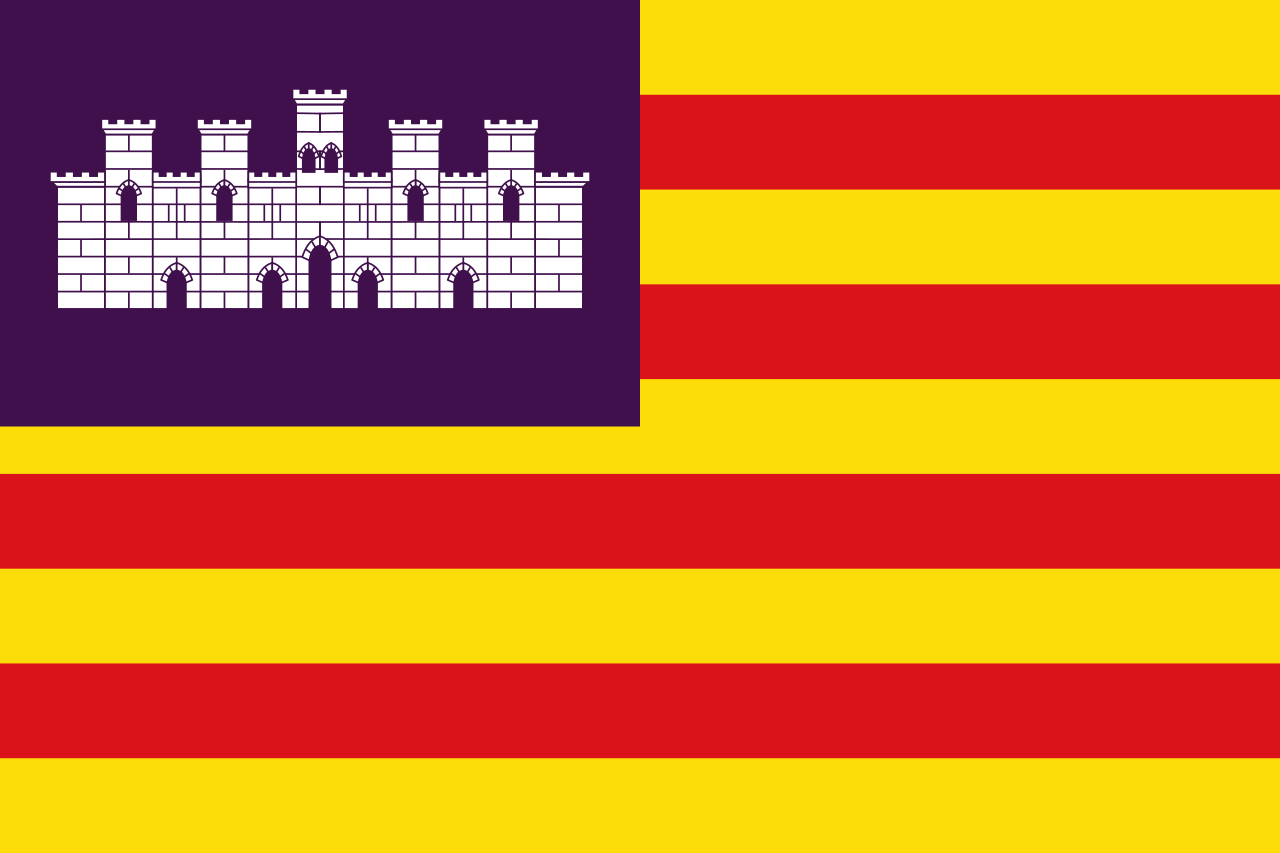
马略卡岛(加泰罗尼亚语:Mallorca)是西班牙巴利阿里群岛的最大岛屿,位于西地中海,是著名的旅游点和观鸟去处,旅客主要来自英国、德国、爱尔兰和斯堪的纳维亚半岛。中世纪以瓷器著名(意大利花饰瓷器),多古罗马、腓尼基和迦太基遗址。其首府帕尔马位于岛西南方一海湾处,它同时是整个自治区的首府。贯通全岛北部的Tramuntana山脉地区由于独特的地形地貌被联合国教科文组织于2011年评选为世界自然遗产。 马洛卡与875277个居民(2015)是巴利阿里群岛的人口最多的岛屿和第二人口最多的岛在西班牙特内里费岛后,在加那利群岛。
Mallorca (katalanisch [məˈʎɔɾkə], kastilisch [maˈʎoɾka]; von lateinisch insula maior, später Maiorica – „die größere Insel“, im Vergleich zu Menorca) ist eine zu Spanien gehörende Insel im westlichen Mittelmeer, etwa 170 Kilometer vom spanischen Festland bei Barcelona entfernt.
Mallorca ist die größte Insel der Balearen-Gruppe, bestehend aus den Gymnesianen und den Pityusen, die eine autonome Gemeinschaft innerhalb des spanischen Staates bildet. Auf Mallorca befindet sich die Hauptstadt der Balearischen Inseln, Palma. Amtssprachen sind Katalanisch und Spanisch. Darüber hinaus ist Mallorca auch die größte zu Spanien gehörende Insel und die siebtgrößte Mittelmeerinsel.
マヨルカ島(マヨルカとう、カタルーニャ語: Mallorca、[məˈʎɔrkə]、スペイン語: Mallorca、[maˈʎorka])[1])は、地中海西部のバレアレス海に浮かぶ島。バレアレス諸島最大の島であり[2]、メノルカ島とともにバレアレス諸島北東部のジムネジアス群島を構成している。マジョルカ島やマリョルカ島とも表記される[3]。
1983年にスペインの自治州としてバレアレス諸島州が成立すると、マヨルカ島のパルマ・デ・マヨルカが州都となった[4]。メノルカ島やイビサ島などバレアレス諸島の他島と同様に人気のある観光地であり、特にドイツとイギリスからの観光客が多い[5]。
Mallorca ([maˈʎoɾka]), or Majorca (/məˈjɔːrkə/[2]),[3] is the largest island in the Balearic Islands, which are part of Spain and located in the Mediterranean. The native language, as on the rest of the Balearic Islands, is Catalan, which is co-official with Spanish.
The capital of the island, Palma, is also the capital of the autonomous community of the Balearic Islands. The Balearic Islands have been an autonomous region of Spain since 1983.[4] There are two small islands off the coast of Majorca: Cabrera (southeast of Palma) and Dragonera (west of Palma). The anthem of Majorca is "La Balanguera".
Like the other Balearic Islands of Menorca, Ibiza and Formentera, the island is an extremely popular holiday destination, particularly for tourists from Germany and the United Kingdom. The international airport, Palma de Mallorca Airport, is one of the busiest in Spain; it was used by 28.0 million passengers in 2017, increasing every year since 2012.[5]
The name derives from Classical Latin insula maior, "larger island". Later, in Medieval Latin, this became Maiorica, "the larger one", in comparison to Menorca, "the smaller one".
Majorque (en API généralement /maʒɔʁk/, rarement /majɔʁk/1) (Mallorca en catalan et en castillan /məˈjɔrkə/), est la plus grande des îles Baléares. Elle se situe en mer Méditerranée, au large de Valence et Barcelone. L'île compte 875 277 habitants. Sa capitale est Palma – les Majorquins l'appellent Ciutat. Elle comprend 6 régions principales : Serra de Tramuntana (montagnes, au nord), Ponent (au sud-ouest), Raiguer (terres agricoles et viticoles au pied de la montagne), Pla (au centre), Migjorn (sud-est), Llevant (à l'est) et la ville de Palma. Le catalan est la langue officielle avec le castillan.
Elle fut habitée dès la période préhistorique, puis par les Romains remplacés par les Vandales, l'Empire romain d'orient, les Francs, les Maures almoravides, puis les Almohades (de 902 à 1229), suivis des Catalans. L'île fut le centre d'un royaume indépendant qui exista de 1276 à 1344, le royaume de Majorque.
Environ 70 % de son produit intérieur brut provient du tourisme, développé à partir des années 1960. Pour les Allemands et Britanniques, Majorque est l'un des principaux lieux de villégiature européens, attirant nombre d'étrangers. 7 % des résidents permanents de l'île sont des Allemands2, ce qui a valu à l'île le surnom ironique de « dix-septième Land ». L'activité agricole traditionnelle est centrée sur les productions végétales : vin (Binissalem), amandes, olives, légumes.
Maiorca (AFI: /maˈjɔrka/[1]; indicata anticamente come Maiorica o Maiolica[2]; in spagnolo e catalano Mallorca) è la più grande delle isole Baleari. Ha circa 857.000 abitanti. Il capoluogo è Palma di Maiorca.
Mallorca (del latín insula maior, ‘isla mayor’, posteriormente Maiorica, en contraposición a Minorica o insula minor) es la isla más grande del archipiélago balear, la cual, junto a Menorca, Ibiza y Formentera, forma una comunidad autónoma uniprovincial (Islas Baleares), la más oriental de España.
La isla tiene 3640,11 km², lo que la convierte en la isla más extensa de España y la sexta más extensa del Mediterráneo. Sus 859 289 habitantes1 (INE 2015) la hace la isla más poblada del archipiélago balear y la segunda isla más poblada de España tras Tenerife.2 Mallorca posee una densidad de población de 240,45 hab./km². Antaño, por su ambiente sosegado, era también conocida como La isla de la calma, pero ahora es un destino turístico muy importante, tanto a nivel nacional como internacional.3
Su capital, y también la de la comunidad autónoma, es Palma,4 siguiéndola en importancia los municipios de Inca (Baleares) y Manacor. La isla de Cabrera y todos sus islotes pertenecen administrativamente a la capital.
Мальо́рка[1] (исп. Mallorca [maˈʎorka], кат. Mallorca [məˈʎɔrkə], лат. insula maior, позже Maiorica — «больший остров» по сравнению с Меноркой) — один из Балеарских островов, расположенных в Средиземном море, принадлежит Испании. Площадь составляет 3640,16 км², тем самым Мальорка является самым крупным островом Испании по площади. Население — 859 289 жителей (2015 год). Как и другие Балеарские острова — Ивиса, Форментера и Менорка — Мальорка популярна в качестве курорта.
Административный центр острова Пальма также является центром автономного сообщества Балеарских островов. Национальный гимн Мальорки — La Balanguera. Мальорка является самым густонаселенным островом Балеарских островов и второй самый густонаселенный остров в Испании после Тенерифе на Канарских островах.[2]






 Balearic Islands
Balearic Islands



